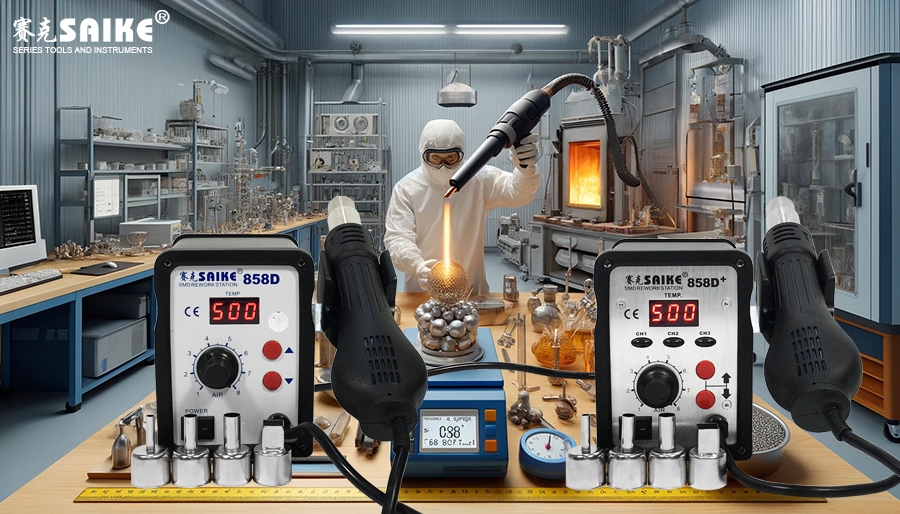
SK-YJ000RFQ-KP 100032
I. Experimental Purpose
The aim of this experiment is to investigate the effects of heat treatment on different materials using a hot air gun. By comparing the reactions of various materials under hot air gun heating, we analyze properties such as thermal stability, thermal conductivity, and deformation, providing data support and theoretical basis for industrial production and scientific research.
II. Experimental Materials and Equipment
1.Experimental Materials: Representative materials including metallic materials (e.g., aluminum alloy, copper alloy), plastic materials (e.g., polyethylene, polypropylene), wood materials (e.g., pine, oak), and glass materials are selected.
2.Experimental Equipment: Hot air gun, temperature sensor, timer, ruler, balance, combustion chamber (for testing the flammability of materials), digital camera (to record the experimental process).
III. Experimental Steps
1.Preparation Phase
– Cut various materials into small pieces of the same size for experimental comparison.
– Measure the initial weight and dimensions of each material.
2.Experimental Phase
– Set the temperature level and air volume of the hot air gun to ensure consistent experimental conditions.
– Fix the temperature sensor on the material surface to monitor the material temperature in real time.
– Continuously heat the material with the hot air gun while recording the heating time with a timer.
– Observe and record changes in the material during heating, such as color changes, deformation, melting, etc.
– If the material shows combustion, conduct safety testing in the combustion chamber.
3.Data Recording and Analysis Phase
– Record the reaction time and degree of each material at different temperatures.
– Compare data such as thermal conductivity, thermal stability, and deformation of different materials.
– Analyze the relationship between material properties and the heating effect of the hot air gun.
IV. Expected Results and Discussion
1.Metallic Materials: It is expected that metallic materials will quickly conduct heat, with the surface temperature rising rapidly, but the internal structure will remain stable. Aluminum alloy and copper alloy may exhibit different thermal expansion coefficients and thermal conductivity.
2.Plastic Materials: Plastic materials are expected to soften, deform, or even melt quickly under hot air gun heating. Polyethylene and polypropylene may exhibit different thermal stability due to their different chemical structures.
3.Wood Materials: Wood may be more prone to combustion, so safety precautions should be taken during heating. Different types of wood (such as pine and oak) may exhibit different heat resistance due to factors such as moisture content and fiber structure.
4.Glass Materials: Glass has high thermal stability but may crack due to drastic temperature changes. Changes in the optical properties of glass during heating should be observed in the experiment.
V. Experimental Safety and Precautions
1.Wear protective eyewear and gloves during the experiment to prevent burns or harmful gases generated by material combustion.
2.Conduct experiments with flammable materials (such as wood and plastic) in a combustion chamber and ensure good ventilation.
3.After the experiment, turn off the hot air gun and wait for the material to cool completely before handling.
VI. Conclusion and Prospects
Through this experiment, we can gain a deeper understanding of the reaction characteristics of different materials under hot air gun heating, providing valuable reference data for industrial production and materials science research. In the future, we can further explore the performance changes of different materials under extreme temperature conditions, as well as optimization strategies for the use of hot air guns in different application scenarios.


